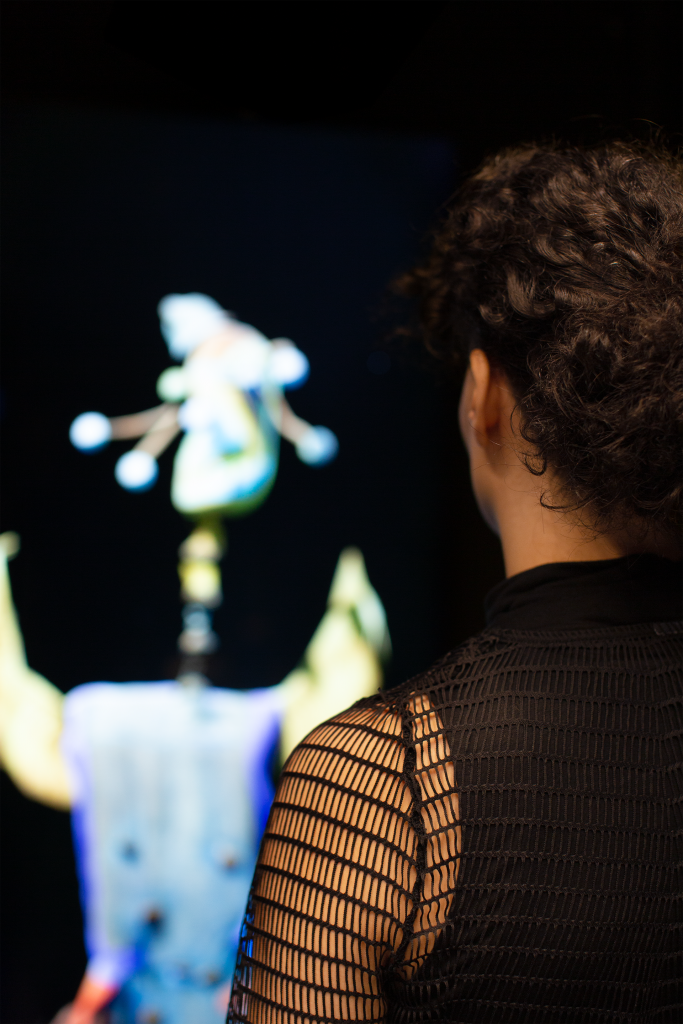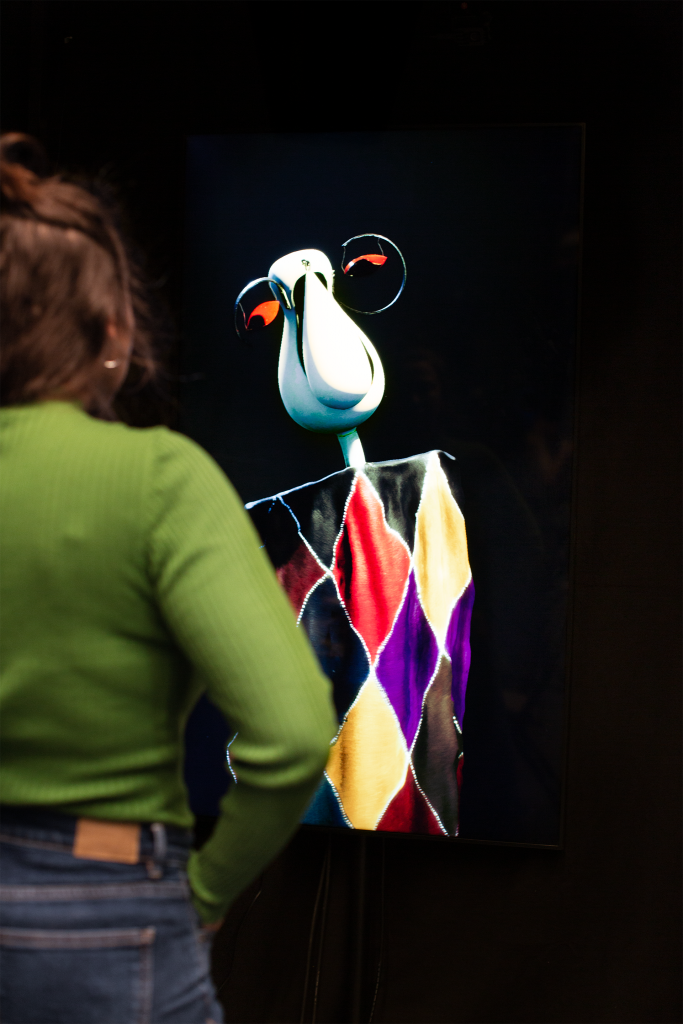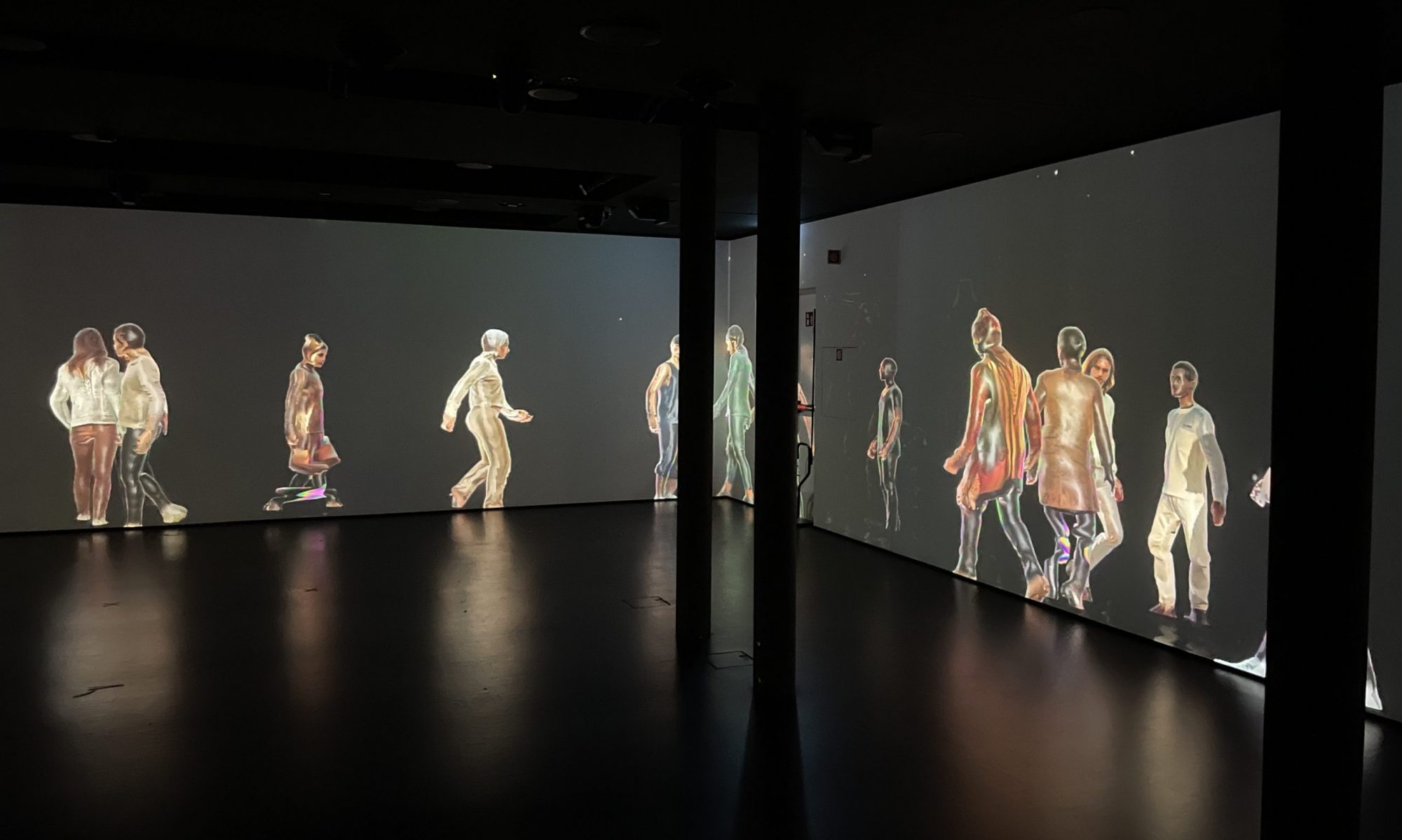Part of the exhibition “The Museum of the Future – 17 Digital Experiments”
29th August 2025 untill 1st February 2026, Museum für Gestaltung Zürich
About the exhibition
The exhibition ‘The Museum of the Future – 17 Digital Experiments’ examines the potential, areas of application, forms of content expansion and implementation options relating to digitality in forward-looking museum and educational work. This year, a major exhibition (17 exhibited projects) will make the ‘state of the art’ accessible to the public with several installations, a website and a broad-based educational program (analogue and digital).
About the project
The Immersive Arts Space` contributing project is called ‘Conversations with Puppets’. It offers an innovative and interactive experience in which the visitors become an integral part of Fred Schneckenburger’s puppet cabaret. After World War II, the versatile artist Fred Schneckenburger founded the “Puppencabaret Fred Schneckenburger” in Zurich and enjoyed success throughout Europe with his sketches. His expressionistic, surreal stick puppets were characterized by their idiosyncratic and unique design. In terms of content, his pieces criticized the hypocrisy and contradictions of the conservative bourgeoisie, with stereotypical Swiss characters in the form of puppets.
Technical architecture
Three of the original stick puppets – Kaspar, der Polizist and die Moral/das Fräulein – from the collection of the Museum für Gestaltung Zürich have been photogrammetrically captured and digitized. 3D artists worked out the details of the textures and cloths to recreate and animate the physical appearance of the puppets surfaces. In addition, Motion Capture recordings were used to add more puppet-like movement to the avatars.
Large Language Models (LLMs) and generative AI form the basis of the interaction and conversations. In order to create a character prompt for each puppet, the original audio recordings of the pieces in which the specific puppets appeared, were transcribed and analyzed. The result of the analysis were distillations of the most characteristic words and/or expressions of the puppets, which were then inserted in the prompt. In addition, to the character references the prompts were further developed to fit the role of each puppets within the exhibition and its dramaturgy.
Further, the interaction is supported by different systems, aiming at a flawless interaction and conversation. SAR motion, a system internally developed by Florian Bruggisser, detects via a camera the movement and body of a visitor. This triggers the interaction and the puppet starts to talk.


Team:
Florian Bruggisser: Technical Lead and Software Development
Oliver Sahli: Idea, Interaction and System Integration
Chris Elvis Leisi: Interaction and Experience Design
Stella Speziali: 3D Artist, Animation
Johannes Köberle: 3D Artist
Corinne Soland: Motion Capture
Pascal Lund-Jensen: Audio Engineering
Sébastien Schiesser: Technical support
Kristina Jungić: Project coordination
Prof. Christopher Salter: Initiative / Director IAS
Photo credits: Chris Elvis Leisi, ©ZHdK 2025
Official website: https://museum-gestaltung.ch/de/ausstellung/museum-future

